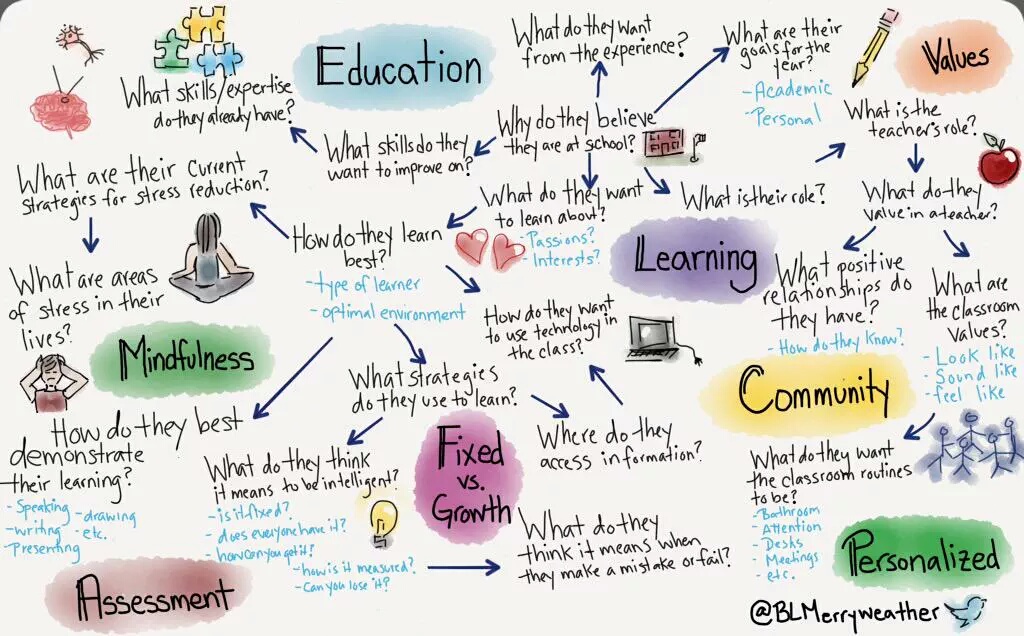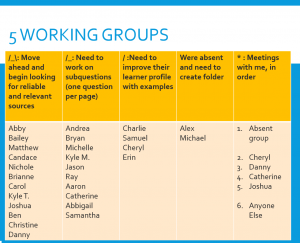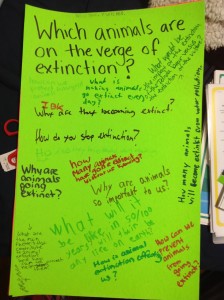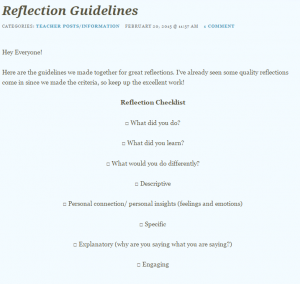I believe that in order for me to best assist my students with their learning, I need to get a better understanding of their goals, needs, and current abilities. Through various resources, course notes, and experience, I have created a preliminary mind map of how I would like to approach this in my future class.
I think it is imperative to understand the student’s perceptions of school and education. By inquiring into why students believe they are at school, I can begin to explore the expectations of the students, parents, school administration, government, and teachers with the students, and help them set goals for the year based on what they want to get out of their education. During this process, I would like to provide lessons about setting SMART goals, and introduce the concept of self-regulated learning.
Exploring students’ beliefs about why they are in school would be a great starting point for discussing student and teacher roles and expectations within the classroom. From here, the class can co-construct those expectations, along with the classroom values and routines. I believe in actively teaching the values by constructing understanding through examples, which can also include lessons about the importance of positive relationships. Ensuring the students understand what positive relationships are, they can identify them, and can act in accordance with creating them, I believe the students will be better equipped to create a community with a sense of belonging for everyone.
Additionally, exploring students’ interests will help foster student-teacher relationships, and provide opportunities for me to personalize the content while I teach core competencies and skills. Topics of interest play a large role in motivation for students, in addition to an awareness of their learning process. I believe it will be important to allot time to teach students about how we learn, both on a psychological and physiological level so that students can identify the circumstances that help them learn best. This includes teaching students about metacognition, learner types, motivation, learning environments, types of questioning (Bloom’s Taxonomy), the different mindsets, etc., in addition to the role of certain important structures in the brain.
I believe that a basic understanding of neurophysiology and neuroanatomy are important for student awareness of learning, and the development of self-regulated learners. By exploring brain and mental health, students can learn about how the body deals with stress and how it affects their learning. I hope to give students time to explore what the stressors in their lives may be, how to recognize when they are stressed, and practice a variety of coping mechanisms.
I would like students to be aware of numerous strategies for each task, so they can select the optimal strategy to enhance efficiency and reduce anxiety. By praising students based on their use of strategies, and selection of appropriate strategies, I hope to foster a growth mindset within the class. At this time, I believe it is also crucial to provide instruction about fixed versus growth mindsets, and facilitate numerous discussions about learning through this lens. In particular, I would like to have a lot of dialogue about mistakes and failures, so students can learn to embrace the set backs, reflect upon them, modify/adapt, and try again without feeling defeated.
An essential component to both the learning process and the creation of a growth mindset climate is assessment. I believe that it is important to set the guidelines for assessment expectations and goals early in the year. I would like to discuss the purpose of assessment, particularly formative assessment, with the students to enhance and reiterate the idea of improvements and process over product. Additionally, I think it is essential for students to understand the importance of self-, peer- and teacher- assessments in their overall learning process.
Furthermore, 21st century learning is an important part of today’s classrooms. I would like to make sure the students have active discussions about the use of technology and the information they find with it. At the beginning of the year, I would like to explore the pros and cons of technology use, digital citizenship, digital footprints, and reliability of sources/information. I believe it is imperative to co-construct these expectations early in the year, to ensure responsible and appropriate use of technology and sources.
By obtaining all of this information, providing the required instruction, and reviewing the student answers to the questions in the mind map, I believe I will be able to successfully promote learning by personalizing instruction for each of my students.

 Follow
Follow


